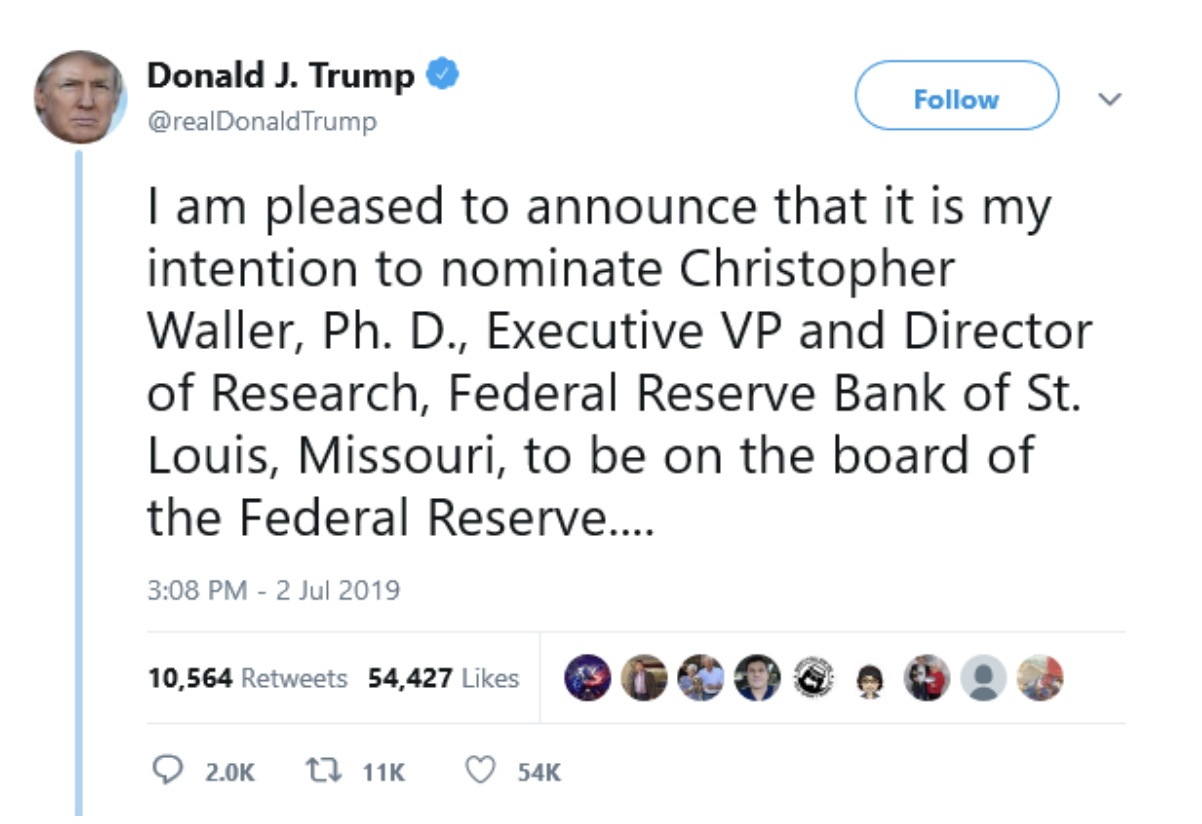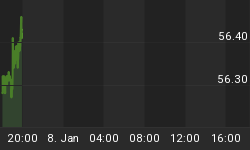Just a few days ago, this year’s fairy tale gold rally--the biggest in six years--was stopped in its tracks after the U.S. and China struck a trade war truce that the market deemed good enough. Prices plunged nearly two percent on Monday to a more than one-week low of $1,381.51 per ounce—the biggest one-day decline since November 2016. But as gold bulls have continually rhapsodized, they are firmly in control, and it would take more than a half-hearted ceasefire to stem the tide.
After dipping below $1,400 on Monday following a tentative agreement between Presidents Trump and Xi to put on hold the ongoing tariff war, spot gold prices have once again breached the pivotal $1,400-an-ounce mark to trade as high as $1,433.80 on Wednesday morning, up 1.5 percent. The gold bull market remains alive and well, sparked by increased open interest, higher volumes, higher closes and higher moving averages.

(Click to enlarge)
The rally is being driven by bargain hunting as overall risk appetite continues to diminish amidst a flurry of weak economic data fueling fears of a slowing global economy as well as President Trump’s latest move to create a ‘super-dove’ Fed.
Global economic slowdown
Factory activity shrank across Asia and Europe in the month of June while manufacturing activity cooled off in the United States placing the world’s policymakers under increasing pressure to avert a global recession.
U.S. manufacturing activity tumbled to a near three-year low in June with the blame being pinned on the ongoing U.S.-China trade war. According to the Institute for Supply Management (ISM,) the index of national factory activity fell to 51.7 last month, the lowest reading since October 2016, compared to a reading of 52.1 in May. A reading above 50 indicates expansion in manufacturing—a sector that accounts for about 12 percent of the U.S. economy. That marked the third straight monthly decline by the index, with experts seeing it as a clear signal that manufacturing is taking it on the chin from growing geopolitical uncertainty.
Meanwhile, Euro Zone inflation remains at unacceptably low levels, necessitating the European Central Bank to further ease monetary policy to boost price pressures. A couple of weeks ago, ECB boss Mario Draghi hinted that more stimulus (read: rate cuts) might be needed to jumpstart the region’s sputtering economy.
In April, the IMF downgraded global economic growth outlook to 3.3 percent from 3.5 percent previously with the U.S. economy seen expanding 2.3 percent down from a previous forecast of 2.5 percent. Eurozone is expected to experience one of the sharpest slowdowns, with the regional economy expanding an anemic 1.3 percent in the current year, down from the previous projection of 1.6 percent.
Related: Will Facebook’s Crypto ‘Libra’ Challenge Bitcoin? With such a flurry of reports proving that the global economy is indeed slowing, even die-hard gold bears will be hard-pressed maintaining a straight face and acting like everything is okay. Few people believe that the trade war truce will offer a lasting solution, with Bank of America Merrill Lynch warning that the trade war is far from over.
Trump taps two Fed nominees
Yet, adding to the drama is President Trump’s latest move to create a super dovish Fed. After spending months assailing the Federal Reserve for hiking interest rates and cooling the economy, Trump has announced his intention to appoint Fed critic Judy Shelton and longtime regional Fed official Christopher Waller to the hot seat.
The president announced his intentions on Tuesday in a series of tweets.

(Click to enlarge)
According to Stephen Innes at Vanguard Markets Pte, Trump is, “…trying to shift the balance on the FOMC to super dove.”
Trump has appointed four of the Fed’s five sitting governors and now has a chance to more fully remake central bank even further with two additional open seats.
His choices appear to contrast sharply though.
Related: VCs Are Pouring Billions Into Cannabis As Legalization Looms
Once a critic of low-rate policies, Shelton now seems to firmly support them and has even taken issue with the Fed’s practice of paying commercial banks interest to park money at the Fed. She favors gradually lowering borrowing costs back to zero to stem the practice.
On the other hand, Waller has previously worked as research director at the St. Louis Fed since 2009. He is viewed as being more conservative than Shelton, having previously defended the independence of the Fed.
Both nominees will first have to be approved by the Fed. Some of Trump’s conventional picks have in the past failed to pass muster by the Congress; notably Nellie Liang, a longtime Fed official now working at the Brookings Institution as well as Marvin Goodfriend, a Carnegie Mellon University economist.
Overall, the gold outlook remains largely positive, with the Pepperstone Group’s Chris Weston setting a medium-term price target of $1,520 an ounce.
Nevertheless, Georgette Boele, precious metals strategist at ABN Amro Bank NV, has cautioned that the market has priced in rate cuts too aggressively—suggesting the ride to higher levels might be rougher than most traders are anticipating.
By Alex Kimani for SafeHaven.com
More Top Reads From Safehaven.com:

















